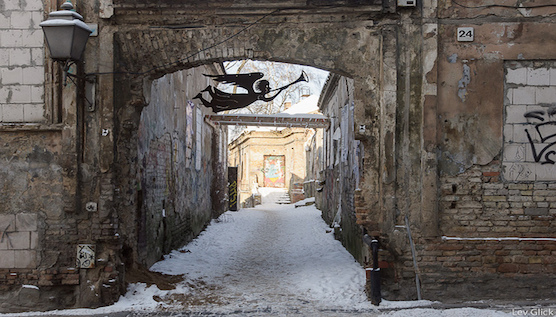Checklist: Vilnius, Lithuania
Photos via Ashley Schneider and Flickr/Tony BowdenWith an autonomous republic pushing the boundaries of culture, a statue of Frank Zappa and a network of winding streets, a walk through Vilnius presents colorful evidence of Lithuania’s uniqueness. After suffering through World War II and ensuing Soviet control, Lithuania’s unique character is beginning to shine through the grit and grime thanks to its quirky capital Vilnius. And one thing has become increasingly clear: Poland’s Northern neighbor knows how to get weird.
The city has spent the last 25 years celebrating freedom of expression and creativity in Lithuania, and the fabric of the city reflects this change from a downtrodden and heavy past.
Here are some things to make sure to do when visiting Lithuania’s capital city.
1. Drink Lithuanian beer
Šnekutis is a microbrew paradise in the old district that has collected an impressive list of microbrews from across Lithuania. Constructed out of wooden walls adorned with rusted instruments, old Lithuanian beer posters and dusty lanterns, this bar adopts the straightforward attitude of a homey dive. Try any one of the Lithuanian beers available, especially the Jovaru Su Naturaliu Mediumi, a pale ale with a touch of honeyed sweetness. Šnekutis also serves some standard Lithuanian bar snacks, like pig ears or crispy peas, and Lithuanian dishes like cepeliani, made from potatoes and stuffed with minced meat and covered with a sour cream sauce and bacon bits.
2. Visit Old Town
Old Town Vilnius, a UNESCO world heritage site, has an ancient Eastern romance to its winding, hilly streets. It contains several protected landmarks essential to the fabric of the city. The Church of St. Anne, a red brick emblem of the flamboyant gothic, gave the old city serious weight when it came to UNESCO’s consideration. Next, the Gates of Dawn, the only remaining city gate of Vilnius, is the site of pilgrimages to Our Lady of the Gate of Dawn, an icon of the Virgin Mary said to have religious powers. Finally, find Literatu Street near the university, an art installment dedicated to the great literary tradition of Lithuania’s past.
3. Enjoy art
Vilnius’ abundance of art continues to make it a top travel destination for the art fiend. Atop a hill beside the Neris River, the National Gallery of Art has crafted a concise and colorful collection of Lithuanian art, which you can enjoy for two euros. Look for the Contemporary Art Center, the biggest of its kind in the Baltics, near the infamous Gates of Dawn in the old city center. The Center hosts national and international artists, curating a tasteful collection to stir Lithuania’s cultural landscape and charges about two euros for admission as well.
-

-

-

-

-

-

-

-

-

-

-

-

-

-

-

-

-

-

-

-

-

-

-

-

-

-

-

-

-

-

-

-

-

-

-

-

-

-

-

-









































